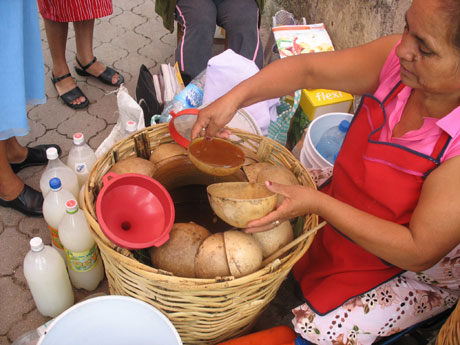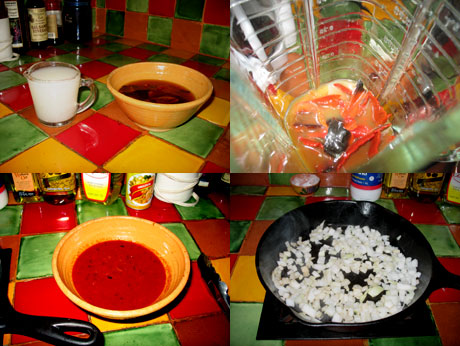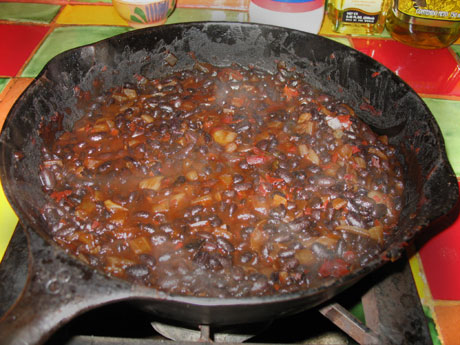
In the Etla Wednesday market, just round back of the zocalo, we stumble across 3 women vending agua miel and pulque. These are often described as aquired tastes but I took to them immedietly. It was with no small passing amusement that we realized as we were drinking our pulque and complimenting the ladies, a group of Japanese tourist were taking a video of us. Doomed Americans.
From My Mexico by Diana Kennedy
Pulque is the fermented sap of the century plant. It has a rather sour, earthy, fruity flavor and slightly slimy consistency, and is very much an acquired taste. Pulque is often curado, flavored with fruits – strawberries, pineapples, tunas, among others and sold in pulquerias or cantinas and even canned for consumption at home. Not only is it consumed as a drink, but it is also used for leavening bread, for rustic table sauces ( salsa borracha, etc. ) for grinding dried chiles, for seasoning pastes for bbq meats, for stews or adding with piloncillo to make a fermented tepache ( a drink more often made with pineapple).
Frijoles Con Pulque
8 ounces bayo, canario or pinto beans
salt to taste
1 large ancho chile, seeds and veins removed
1 cup pulqe or light beer
2 tablespoons lard
2 tablespoons vegetable oil
3 rounded tablespoons finely chopped onion
6 ounces queso fresco, crumbled
Pick over the beans, rinse, drain, cover with water and cook over low heat until the skins are soft, about 3 1/2 hours. Add the salt and continue cooking for 10 more minures. Reduce over high heat to 3 1/2 cups.
Lightly toast the chile, cover with hot water, and set asie to soak for about 15 minutes or until soft. Drain. Put 1/2 cup of the pulque into a blender, add the chile, and blend until almost smooth.
Heat the lard and oil in a skillet, add the onion and fry without browning until translucent. Add the beans and chile mixture and cook until reduced and shiny. Add the rest of the pulque and continue cooking for about 15 minutes. When the mixture has reduced to a thick paste, stir in the cheese. When it has melted, serve immediately.
Now I took several liberties with it. The first is I used frijoles negro, 16 ounces cooked with some onion and some epazote. From that I took my 8 ounces for the recipe. Then I used 4 guajillo chiles instead of the ancho. Both Bonnie and I love the ancho chile but I think the guajillo is sweeter tasting and I love the red color. Also I didn’t use any lard in the dish and actually only used 1 tablespoon of oil to fry the onion. And a final disgrace, we didn’t put any cheese in the dish. This and the reduction on oil was an attempt to reduce the calories. I suppose I will have to prepare it someday exactly from the book but we liked our version just fine. The pulque was tart and tangy, with the guajillo sweet in contrast.

